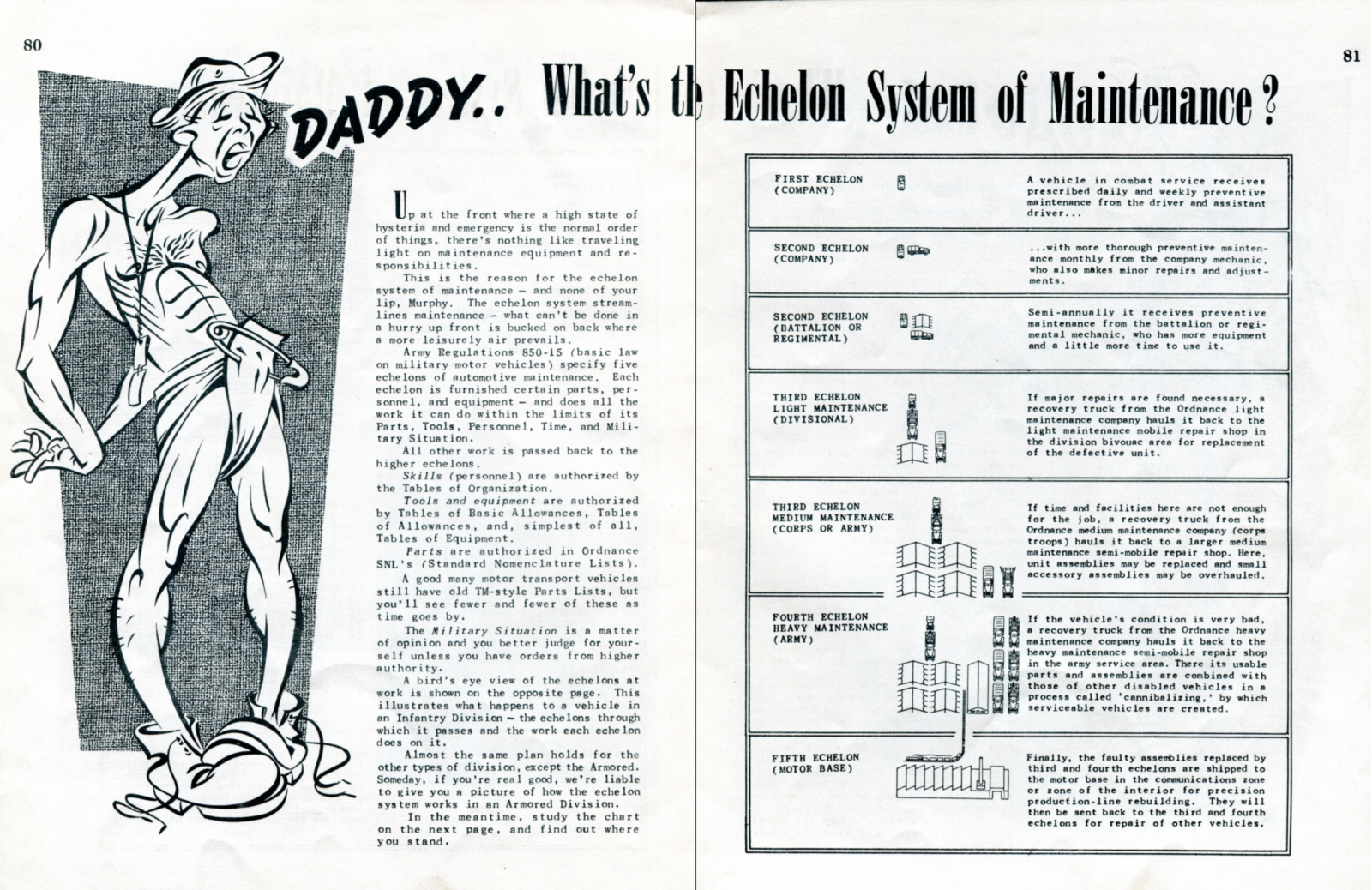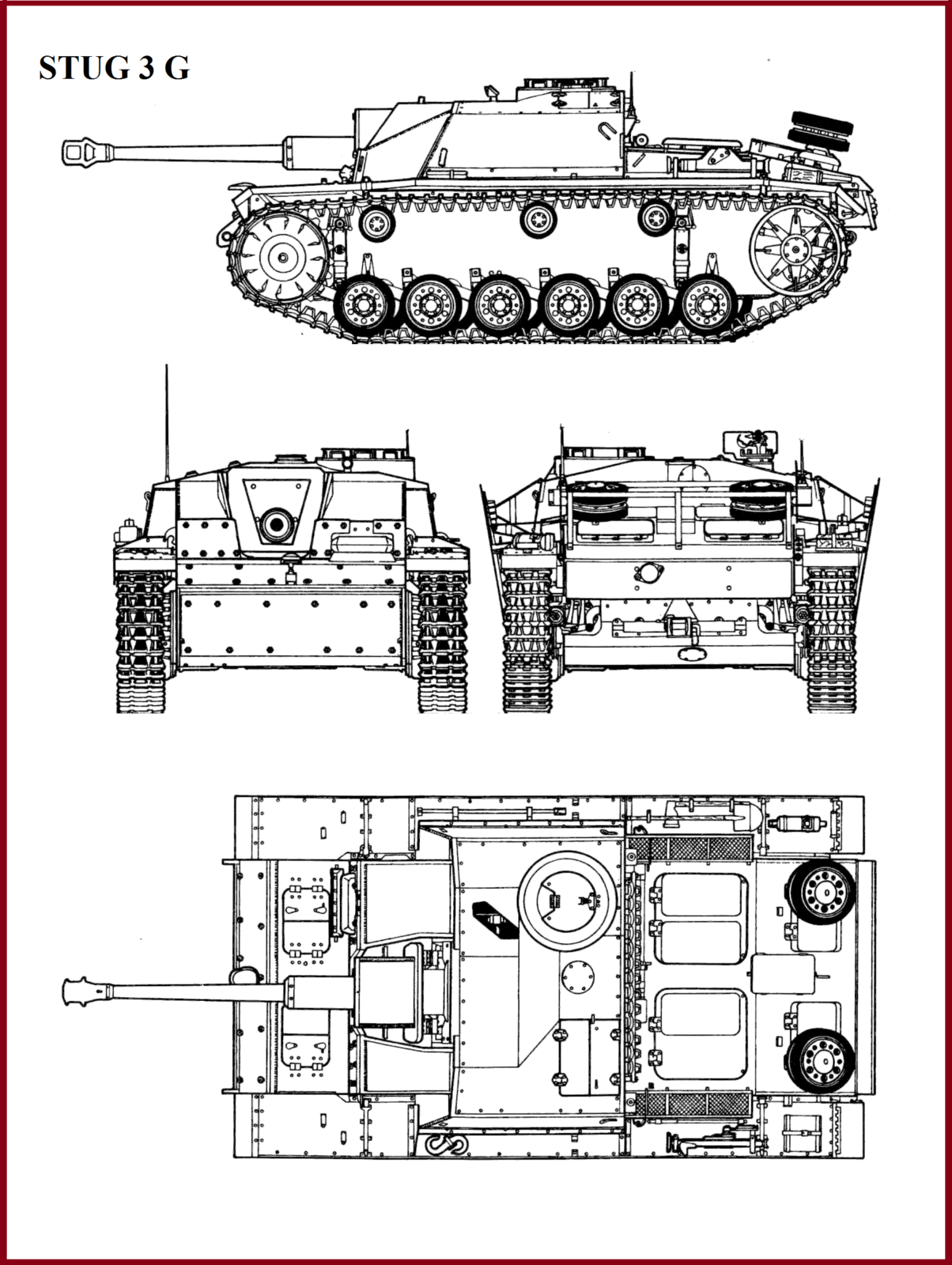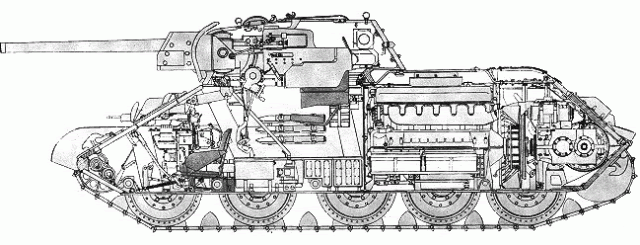Did American Tank Design Stand Up? It Did Just Fine.
The Sherman compared well to the other tanks in its weight class. It even fared well against vehicles much larger when you take in the whole picture. The US spent a lot of money lavishly equipping these tanks, even the lend-lease tanks shipped with submachine guns for the crew and vinyl-covered, sprung, padded seats, a full toolset, basically, all the same, things a Sherman issued to the US Army would come with, without the US radios. lend-lease Shermans got the British No. 19 set. Though sometimes the tanks lost things while in the shipping network, for the most part, they arrived and were delivered to the combat arms, ready to use.
The Sherman was not designed to be comfortable for its crew; ergonomics wasn’t a thing back then, but due to the way it was designed and built, it was fairly comfortable as tanks of the time go. Ease of use was taken into account as the design was improved. They improved the suspension several times, the steering and braking system was improved, the controls, in general, were improved, the fuel system was improved, and the fire control system was also improved. Many of these changes were to make the tank easier for the crew to fight or maintain.
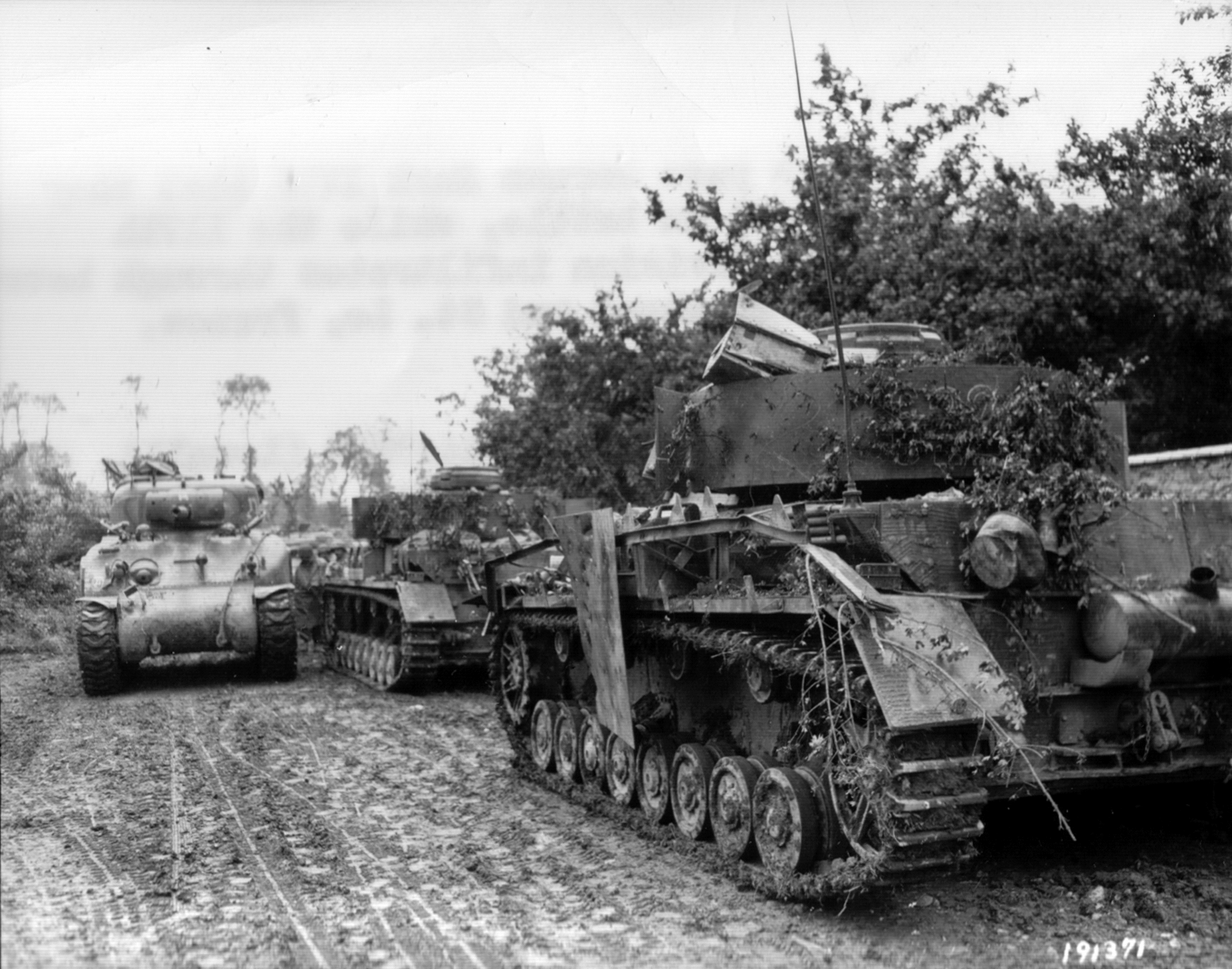
The Sherman tanks were not cheaply built and had finely fitted hulls, beveled armor, and a lot of attention to detail that was not dropped in favor of production speed in many cases until very late in the production run, but function was never compromised.
The Sherman tanks also had multiple generators, including one that had its own motor, so the tank’s electrical system and turret could be run and not drain the batteries. They had a stabilizer system for the main gun, and all tanks had high-quality, high-tech FM radios. The radios were some of the best in the world at the time, if not the best. The Sherman tank was equipped with an extra set of gun-firing instruments that allowed the Sherman tank to be used as an artillery piece if needed. This was something no one but the US military did.
Quality control at all Sherman factories and sub-contractors was tightly monitored and superb. Parts were not modified to fit if they did not match the specifications, they were discarded, if too many parts had to be discarded, the contractor was dropped. Sub-assemblies as big as turrets and hulls or whole tanks needing overhaul were shipped between factories, and no parts had problems interchanging between factory models. One factory could rebuild another factory’s tank using its own parts with no problems at all. These were all very advanced features in a tank designed in the early 40s and the Germans the most advanced of the Axis nations, really couldn’t come close, instead, they produced over armored, over gunned, unreliable tanks that could not be used in fast-paced offensive actions. The Nazi Germans could really only dream of having a tank arsenal like CDA or FTA.
Having all the parts produced from all the different Sherman factories being interchangeable really helped keep Sherman tanks working. As tanks were knocked out of action, the severely damaged ones, in many cases, could be repaired and taken back to the 4th and 5th echelon repair yards and overhauled and issued as replacements. Basically, the division and army-level repair shops could “factory refurbish” tanks and other vehicles. Because hundreds of Shermans were exactly alike, no matter who produced them, and even updated models or parts would bolt to the older models, you could easily swap major and minor parts and assemblies. Tank A has a dead, beyond-repair turret, but the hull is good. Tank B has a good turret but a destroyed hull, so making one tank from two was very easy. With a robust echelon repair system like the one detailed in the image below, you can keep the flow of replacement vehicles up by providing refurbished hulls from knocked-out tanks in the Combat Zone.
It is also easy to discount the Sherman tank’s combat value if you look at the production numbers versus the tanks it fought, but the numbers do not give a good idea about combat numbers because all those Shermans went all over the place. Sure, the United States produced a huge number of Sherman tanks, but they supplied them to an awful lot of countries through lend-lease. The British, Canadians, French, Russians, Chinese, Poland, and I’m sure I’m forgetting a few nations all used it. You also have to keep in mind that there were thousands of Shermans used in the United States for training, and some never saw combat or left the US. The ones that did were remanufactured later in the war and then sent to Europe for the final campaigns in NWE. The Sherman was built in great numbers, but not in such numbers that the Germans would see anything like 10 to 1 odds in most battles. In a few key battles, the Germans managed to muster more tanks than the Allies. The Sherman was also used in large numbers against Japan.
I do not see a better choice of a tank for the Allies, given their choices and the wide-ranging requirements the Sherman faced. Considering it was a rushed design, a stopgap, to hold the line while the M7 and T20 series were developed, it proved to be a very capable tank. It was also capable of taking a series of upgrades that kept it relevant far after the war, something no other Western tank can claim. German tank design was so bad that only the French even toyed with them and quickly found the Panther to be terrible and unfixable. Just about all of the design features that set the German tanks apart proved to be failures, only referenced as bad ideas that actually made it into production (I’m looking at you German cat suspension).
One aspect of Tank combat that is not well understood is the importance of being able to spot, shoot at, and hit an enemy tank. The tank that gets the first hit in, even if it does not knock the tank out, statistically wins the fight. The Sherman tank, even the very early models with only the periscope sight, had a big advantage over German tanks in this area.
Sherman Fire Control Advantages:
- The Sherman commander had a rotating periscope and a vane sight for the main gun.
- The Commander had a power traverse override. Meaning he could control the turret from his seat.
- The power traverse was very fast and precise, allowing the gunner to fine-aim the gun. No German tank’s power traverse system was good enough to do this.
- The Gun was stabilized, and when used, it allowed, at the least, a very fast shot once the vehicle was stopped. No German tank of the war had a stabilizer. The technology was well past what Germany could produce during the war.
- The gunner had a periscope sight with a 1.x wide-angle view and a telescope built into the same sight. He could switch from one to the other with ease. This made finding an enemy target the commander had just put the turret on much easier since the gunner was not forced to use only a telescopic sight alone to find the target. These combined periscope/telescope sights were improved throughout the war.
- The gunner had a second telescope on the mid-war on, to go with the Periscope sight. These telescopic sights improved throughout the war.
- The power traverse system was completely independent of the automotive system. As long as the Aux Gen and the batteries were intact, the power traverse system for the turret could be used. The system was very easy to use and relatively comfortable for an average-sized man of the time.
German Tank Fire Control System Advantages: The list is small.
- The German 75mm and 88mm guns were better than American guns at killing other tanks. (At least until the 90mm M3)
- German optics, in their telescopic sights, were better. This is not as big of an advantage as it’s made out to be. It simply means they had come up with a method to coat the lenses in their optics, make them slightly clearer, and make them brighter. This really did not make any difference at the combat ranges in Western Europe. It may have made a marginal difference on the eastern front. It did nothing to negate the difficulty of actually finding a target to shoot at long-range when your only view of the world was that scope.
Now, I know this list seems short, and to be fair, if I’ve missed something, let me know, and I’ll add it if it’s not some wehraboo fantasy. You add on top of this that these complicated and hard-to-use tanks were crewed by very poorly trained crews by 1944. The Germans rarely had the fuel to train crews when they had the time. On top of that, German tanks were automotive unreliable, making training with them harder because it worsened their out, and spare parts production for tanks was extremely limited.
The US and British Tank crews were extremely well trained by June 6th, and they got better as the war went on, just like the Sherman did. The Germans went in the other direction.
German Tank Three or PIII: The Best Tank The Nazis Ever Produced.
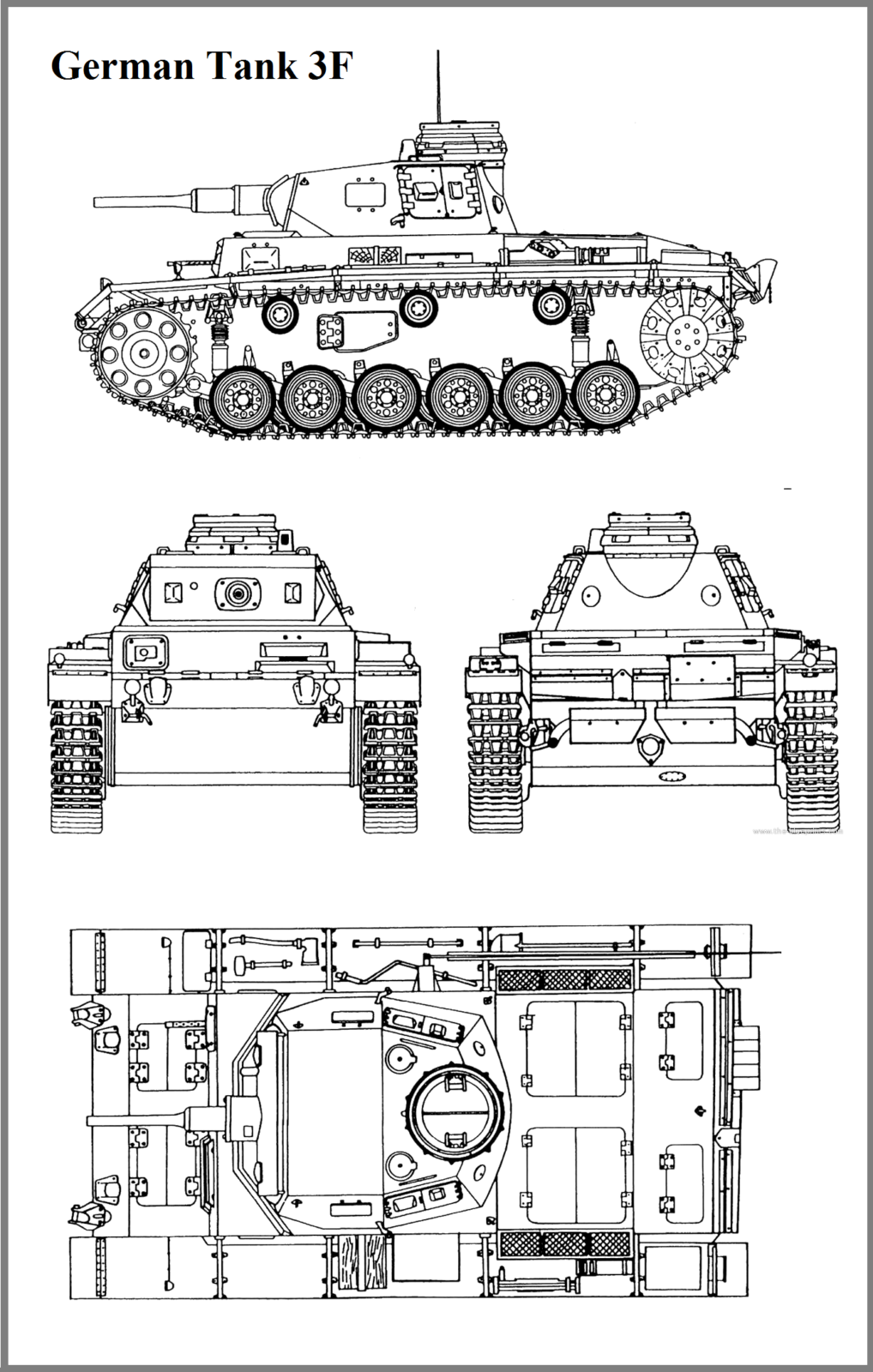
This tank fought from the first days of the war and really was a great little tank. It’s too bad that the Sherman, all models, outclassed it in just about every important way. The Sherman had better armor, firepower, and similar mobility. Even with its most potent gun, a long 50mm, the PIII had trouble with the Grant and Lee, let alone an M4. In the mythical but often argued about on the internet, one on one tank battle, the Sherman stomps the Panzer III every time. This chassis was at the end of its life as a tank with the 50mm. Larger guns or more armor could not be fitted to it.
It was a good tank, but nowhere near as good as a Sherman, but to be fair, it was at the end of its development life and the M4 was just beginning its long, long life with many countries around the globe, that would span decades, with a few nations still keeping some Sherman based vehicles in inventory. The PIII was designed before anyone really knew how to build a good tank, and with that in mind, it was a good vehicle.
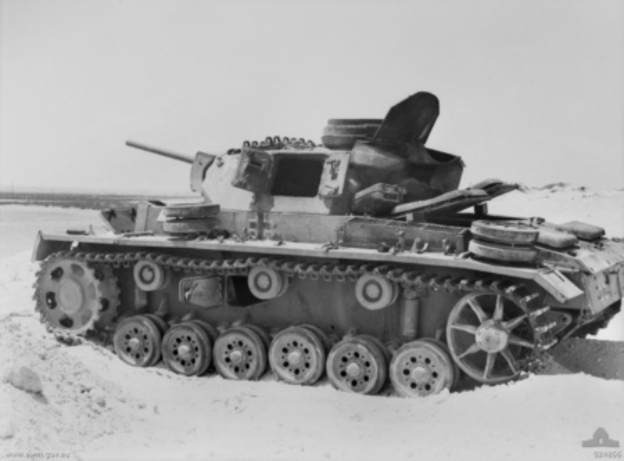
The biggest problems with the PIII design were the small turret ring, the suspension weight limit, the automotive system’s power and ability to be upgraded and take more weight, and the complicated assembly and maintenance design. Look at all the plates on this tank welded and riveted together and how many angles it has on the hull and turret—all that takes extra time to produce.
As we know, the Shermans automotive components were able to take on a lot more weight with no real issues, its turret ring was HUGE, allowing it to be up-gunned much more readily, and all its motor choices could handle extra weights without causing much drama or concern. German tank designers and the industry that made their tanks were just too primitive to produce vehicles with that much growth potential. Hell, they were struggling to get engines and automotive systems to meet the base specs of their designs and be even remotely reliable, and largely failing at it, to worry about streamlining the design for ease of manufacture. Sadly, instead of learning much from this design, and building a larger slightly simpler design, they went with even worse vehicles. The few good vehicles like the PIII are overshadowed by the really bad ones that had great post-war PR campaigns (Tiger, Panther, Tiger II I’m looking at you!), but were largely failures if you look at their combat records with an objective eye.
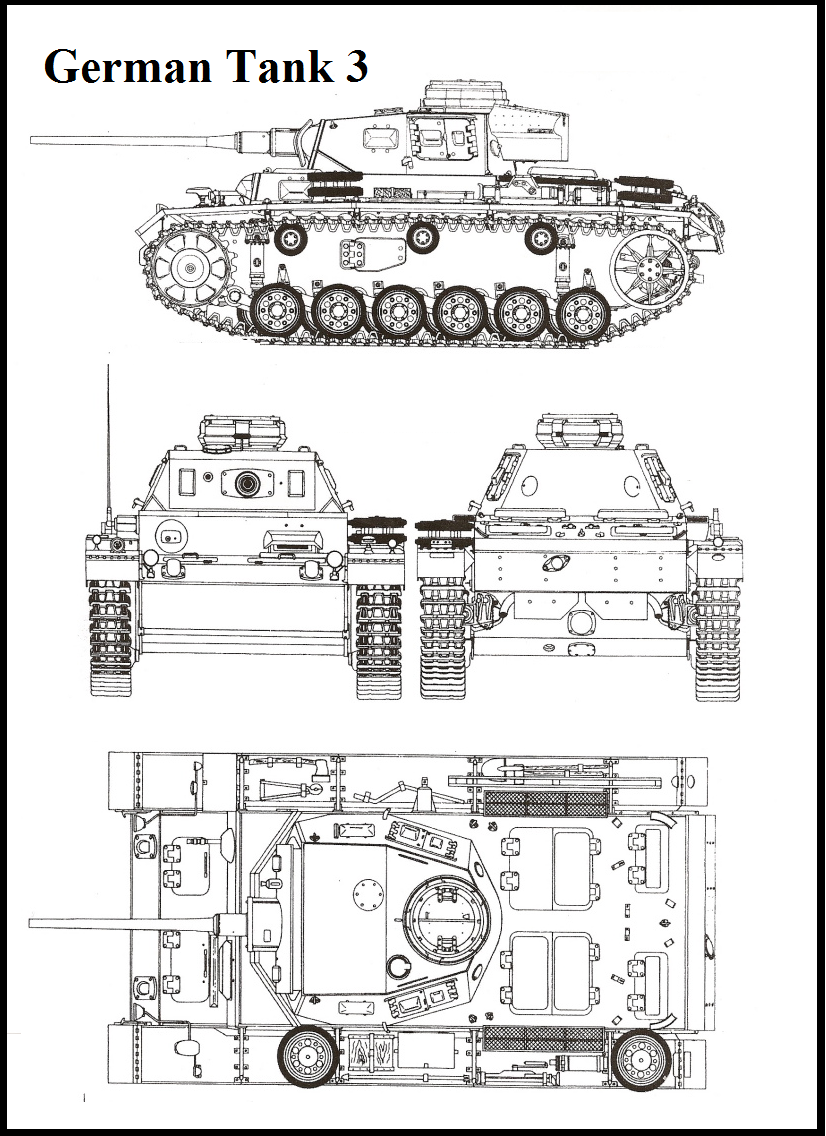
In many ways, this was the best tank Germany produced during the war. This was one of the tanks used the short time the Germans really did things offensively during the war; this is the tank that took them to the outskirts of Moscow. And it was a great little tank; its turret ring was just too small to fit a real gun. They solved this with the StuG, but I’ll cover that later. They produced 5774 of them. It did have teething troubles because it was a tad complicated, but unlike many later Nazi designs, the bugs were worked out and the design became one of their most reliable armored fighting vehicles. Not Sherman reliable, but about as close as a German vehicle would get.
This tank continued to be used throughout the war and was up-gunned to a short 75mm howitzer for infantry support once its use as a tank became limited. The ones not converted to use the short 75 were probably used for parts, and or converted to Stug IIIs. You have to give it credit for being a good looking little tank too, that kind of thing is important to model making companies!
German Tank Four or PIV: Boxy and primitive, but it got the job done.

The PIV was a closer match to the Sherman in size and capability, but still inferior in most important ways, and it was a complicated design that wasted a lot of man-hours on welding together the overly complicated hull and turret designs. It had weaker, un-sloped armor, in a complicated hard to produce configuration. Its suspension used leaf springs and was inferior to the Shermans VVSS suspension. It had weak enough side armor, without the use of skirts, the tank could be penetrated by Russian anti-tank rifles, and the Russians had a lot of AT rifles. It started off with a low power 75mm gun that had no chance of hurting a Lee or Sherman, and was later up-gunned with a 75mm similar to the one mounted on the Sherman, but slightly better.
At this point, the PIV became a serious threat to the Sherman, the main Nazi tank threat for the whole war. The Sherman still held all the cards with better overall armor, mobility, reliability, spotting, gun handling(getting that first shot off), and crew comfort. The Sherman design had room to grow and would take a whole new turret and a whole slew of larger guns. The PIV was at the limits of what the hull could handle, and its turret ring was too small to accept more powerful guns, though the gun it received in the improved models was a good gun. The final version of this tank, the J was a simplified version that lacked a power turret drive or skirts, it was not to improve the combat ability, and it was done to speed up production because the Germans were desperate for more armor. Nazi Germany produced 8569 of these tanks, from 1937 to 1945.
One of the weaknesses the PIV suffered from was the suspension. It was fragile and prone to breaking in rough terrain. The leaf spring setup also offered limited travel and really was the most limiting feature of the tank. The Sherman was reputed to be much better in rough and mountainous terrain. If you just look at a good picture of the PIV, and count the welds, and look at how complicated the thing looks, and then consider all the man-hours needed to build the thing, you see just how much time would have to be wasted making the complicated hull, in particular for a nation like Germany that had to depend on welders, and not welding machines to put the hulls together, this was a bad idea.
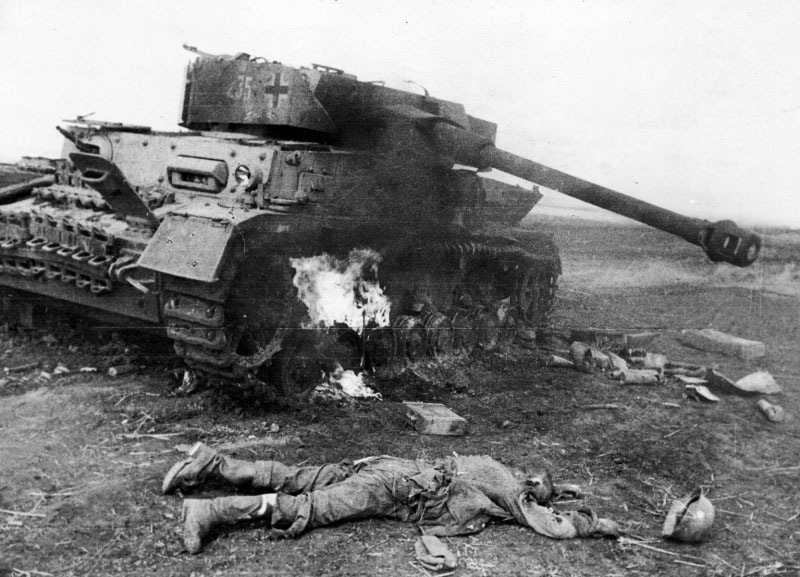
This tank allowed the Germans to use maneuver warfare, and it wasn’t tied to the rail system because it was much more reliable than the Panther or Tiger. One argument to make is, Nazi Germany couldn’t really have produced more Panzer IVs and StuGs because they didn’t have the manpower to crew them.
The counter to point to that argument is if the Germans had not produced the two ridiculous heavy tanks. Tiger 1&2, the huge maintenance tail these vehicles required could be broken up; a tiger company had the same number of mechanics and maintenance personnel and their transport, as a full Battalion of PIV or III tanks. You could take all these men, and put them into units that didn’t bleed resources when Nazi Germany had few to spare.
They also could have manned these new units with all the men they put in the many captured tanks they used. They used large numbers of T-34 and M4A2 Shermans captured from the USSR. They should have stuck with the tanks they considered producing that was closer to these, the VK3001 (d) was almost a direct copy, Germanized to make it much harder to build and work on of course, of the T-34. This tank looked a lot like the T-34 that inspired it, but apparently, fears of friendly fire losses because it looked too much like a T-34 and a lack of aluminum to make the copy of the diesel the T-34 used were probably the real reasons this tank didn’t get produced and not corruption in the Nazi Armor development pipeline…
It turns out; the Daimler Benz proposal died for several reasons, the main being that several Nazi industrialists under Spear convinced Hitler getting a tank into production fast was more important than the tank being the best tank able to be put into production. This, coupled with a propaganda campaign run by those same Nazi lackeys against the Daimler Benz proposal, spelled its doom. Hitler, convinced by their arbitrary date of production argument, decided on the MAN proposal with its frontal armor increased. It would be the “Panther” tanks we all know and love. I guess it’s really a good thing the Nazi industrialists were a bunch of clowns, greedy opportunists, and straight-up lackeys to even worse men or the Germans might have had a decent tank.
At any rate, they didn’t produce the right tank; they produced a pair of heavy tanks and a medium as heavy as a heavy that wasted far more resources than ever could be justified by these tanks’ propaganda-inflated war records. They probably best served in a propaganda role since they had truly fearsome reputations, but once they were met in combat a few times, that wore off, and the American and British tankers found ways to beat them, like just making them drive around a bit until they broke down or ran out of fuel.
German Tank VI Tiger: The Premier Fascist Box Tank, Great For Plastic Model Companies, But Not So Great As A Tank.
This tank had a big weight ‘advantage’ over the Sherman, it is a heavy tank and all, but for the most part, was so rare it had almost no impact on the war. In fact, most of the SS units that used this tank lied so much about its prowess there are some doubts it got even 1/3 of its actual kills its Nazi crews claimed. It also had to be moved by train giving it limited useable tactical mobility, and these tanks sucked up the maintenance, supply, and rail resources of a much larger unit. They also required a lot of resources to build, and it’s hard to make a credible argument they were worth the trouble since they had such a limited impact on the war.
The US Army faced very few of these tanks. When they did face them, they didn’t prove to be much of a problem. From North Africa to Italy and Normandy and beyond, the Tiger was a non-factor when facing US Shermans. Of the 31 sent to North Africa, one was captured after it was knocked out, or the crew got scared, and the British still have it! The claims of it being a big factor in the Sid Bau Zid battles were false, and they didn’t achieve much of note in Sicily and Italy. In Normandy, they only saw action against the British, and Commonwealth forces, where the true value of the Tiger is clouded by German propaganda and the German military’s tendency to overclaim across the board, but especially bad in SS units.

The Sherman had a fire control advantage allowing it to spot the huge Tiger first in most cases, it could outmaneuver the bigger tank, and its guns could take it out from the sides and back, or if it got lucky, even the front. The Sherman did face this tank in British hands, but we will cover that later. It’s safe to say the way the Brits used the Sherman was different and riskier and resulted in much higher tank losses. They were far less concerned about tank losses than men in general, and the Sherman was a fairly safe tank to be in when it got hit.
The Tiger ultimately did the Allies a favor by making it into production. It just wasted men and resources that could have been turned into more PIVs and STUGs. It was more of a propaganda tool, used to prop up the home front by lying about the prowess of the tank and their Aryan crews, like Michael Whitman, who was not nearly as good as the Nazi histories would have you believe. In fact, he got himself and his crew killed by trundling off all alone, probably looking for more imaginary Nazi glory.
Living, well, recently living, tank aces like Otto Carius have admitted many of their “kills” were added for pure propaganda reasons. SS unit kill claims were often discounted by half by the regular German Army, and even that was probably being generous since there was no effort to confirm the kills. Most authors who write books about German tanks take these kill claims at face value. When someone bothers to compare the kill claims to the units they faced with the Soviet, American, or UK records, more often than not, they were not even facing the claimed unit, and often, it was not even in the same area. When they did get the unit right, the losses rarely came close to matching up. Even a nation trying to be honest often gets kill claims wrong. Still, Nazi Germany liked to use inflated numbers to help soothe a restless population that was starting to see the error of supporting Hitler’s foolish war.
If you’re feeling the urge to angrily post a comment about how I’m a Sherman fanboy and unfair to your favorite Nazi box tank, take a breath, and keep reading, cause you’re only going to get angrier. (Boy, has this part proven true, and I’ve gotten much flak for my evaluation of the Tiger) As always, the Wehraboo makes claims, but never backs them up with any sources or actual facts, just check the comments here.
Now, let’s cover some of its many flaws. It was really big and heavy, limiting what bridges it could use. This size and weight problem affected a lot of things: automotive reliability, how easy it was to spot, how it was shipped, and the amount of fuel it needed. The gun was decent, but for a tank of its size, the 88mm seems pretty weak, and it wasn’t even the good one, the 88mm L71. Can we say ‘bad at designing cooling systems’? Just look at the rear deck and then a cutaway of a tiger and marvel at how much space the radiators and cooling ducts take. Now, let’s talk about its suspension. There is nothing wrong with torsion bar suspension; it’s still popular today on tanks and other AFVs. Where the Germans went wrong is the road wheels. The interleaved and overlapped road wheels were incredibly stupid, making maintenance or damage repair on the suspension a nightmare. Another huge problem for a vehicle that depended on rail transport to be transported on German train cars was that the normal tracks had to be removed and a narrower set installed. Then, the combat tracks were put back on at the destination. This was a huge hassle and time waster for the crew, at the very least.
The turret drive was a laughable contrivance using PTO from the engine and transfer case, meaning the tank had to be running and at high RPM to rotate the turret at full speed. The system was not very refined, and only got the gun into the general area of the target, then it had to be finely aimed with the manual traverse wheels. The maximum turret rotation speed meant the tank had to be stopped, and the motor was running at maximum RPM. The Tiger’s motor did not like running at max RPM, and for the most part, the crews just used the nonpower controls.
Another thing to note is these tanks were essentially hand-built. Some people assume that means painstakingly handcrafted, and it’s true. The Germans wasted a lot of time on finishing items to make the tanks look nicer. I’m not sure if this was some need for the Germans to have nearly ‘perfect’ weapons, at least appearance-wise, or if it was a way for the German tank industry to charge more for the tanks and make more money off the Nazi regime. Still, it didn’t matter; the result was the same: a lot of wasted man-hours on stuff that didn’t improve the tank’s combat effectiveness.
Just like your car, when a Sherman tank needed a spare part, it placed an order, and the quartermaster corps sent one to them through the supply system. If one wasn’t in stock at the local spares depot, it would be ordered from the next level up. When the part came, it would fit in most cases, and only if damage caused a problem would hand fitting be needed.
This was not the case for the Tiger or any other German tank for several reasons, the main being the Germans liked to fiddle with the tanks on the line, making it rare for any to be truly the same. For the Germans, most parts would need to adapt to the individual tank, making field repairs a difficult job. Part of this was because they had so many different sub-variants between major variants, and parts for early variants may not work on a later one or would need adapting to work. On the Tiger, there are so many things they changed, big and small, through the short production run that parts for earlier tanks would practically have to be custom fit. The testing period was not long enough, and as they fixed problems found in the field they incorporated it in the ‘line’ instead of holding off until all the changes could be lumped in at once not slowing production, or improving the parts in a way that didn’t require a line change or were backward compatible. On top of that, the Germans just didn’t produce many spare parts. And what they did produce was cut way back later in the war as they ‘optimized’ production by cutting spare parts production. The lack of spare parts meant many parts came from cannibalization, but even then the parts would have to be adapted since the tanks changed so much.
Only 1347 of these tanks were even built. Numbers were not needed to kill these wasteful and stupid tanks, but they were nice to have anyway when one did actually make it to a fight. This tank had zero positive effect on the war for the Germans, they helped win no battles, and it just wasted resources, both material and industrial, and helped the Nazi’s lose the war that much faster. It would be nice if that’s why so many people admired these tanks, for their monumental stupidity and thus indirectly helping the good guys win, but no, it’s because it was “cool looking, or had the best armor ever, or was a technological marvel only defeated by hordes of subhuman scum”, or other completely untrue, Nazi propaganda myths about these terrible tanks.
For another view on the Tiger, check out: Germany’s White Elephant.
Another link here about the Tiger, and another, and another view about how the Sherman compares
German Tank V Panther: Bigger, Less Boxy and Less Reliable, Nazi Germany’s Fail Tank.

Much has been said about this tank, and most of the positive stuff is just, well, there’s no way to say it other than this, it’s straight-up bullshit. The panther was a ‘medium’ tank as big and heavy as any heavy tank of the time. What kept it from being heavy was its pathetic lack of armor for a tank of its size. The side armor was so weak Russian anti-tank rifles could and did score kills on these tanks through it. This is why later models had side skirts covering the thin side armor above the road wheels, left uncovered it was vulnerable to these AT rifles, and the area wasn’t small either. Seems like a pretty bad design right there, it was not a new weapon, the Soviet Anti Tank Rifle.
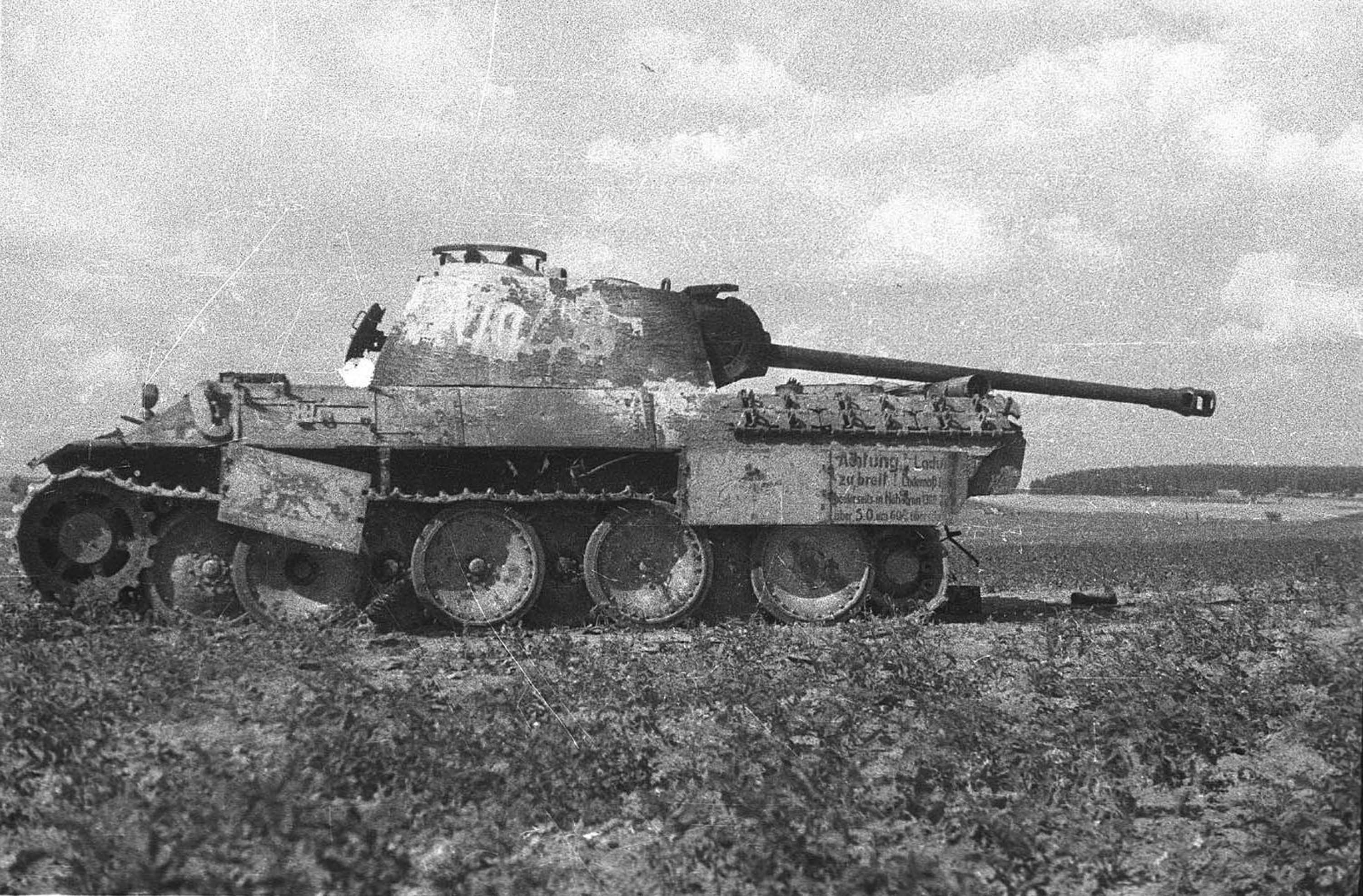
Here is a list, off the top of my head, of the Panthers problems:
- It liked to catch fire due to a fuel system that leaked in more than one way.
- The hull didn’t let the fuel drain, making the fire problem worse. Tilting the hull to much could cause a fire because the gas that had leaked out of the leaky fuel system was in pools in the bottom of the sealed hull, and would hit exhaust pipes. This was because the early tanks waterproof liner in the engine compartment, to give them a “deep fording” ability, caused the drainage problem. The feature was a sham, just to line Nazi industrialists pockets, all later removed from production tanks, but the other problems with the fuel system always made it prone to fire.
- The motor had a tendency to backfire or fail catastrophically and cause fires as well. The fuel system was leaky, so there was always fuel vapor in the engine compartment.
- The cooling system was very complicated, a damaged fan or clogged duct could cause a fire. It was found the radiators were vulnerable to damage, so plates were added above the armored grates on the engine deck. All these add-ons just piled more weight on an already overstressed, and unreliable, automotive system.

Let’s move away from the fire problems and move onto the turret problems.
- To rotate the turret, you had to rev the engine up. The engines were fragile. You want full traverse speed; you needed to be redlining the engine. This is because they used a Power Take Off system and tied the turret drive to the engine. This was a really bad way to design a turret drive. If you want a good laugh, go find a diagram of the Tiger or Panthers turret drive system and marvel that it worked at all. It didn’t work if the tank was on even a mild slope. The drive was so weak in these cases it couldn’t even hold the gun in place on the said slope. I’m sure if you took an electric driven hydraulic or just straight electric system it would weigh a lot less than all the parts they had to use to make the PTO system work, and not even well. This system only ‘worked’ when the Panther was running. The Sherman had a backup generator that could operate the tanks electrical system, including the turret traverse system. German tankers could only dream of such luxuries, well the ones that didn’t get to crew captured Shermans.
- let’s talk about the gun, gunner, and commander. One of the commander’s jobs is to find targets for the gunner and get him onto them. The commander has pretty good all-around views from the turret with his nice cupola. The gunner is stuck with just his telescopic sight. He would need up to several minutes in some cases to find the target the commander was trying to get him on due to him not having a wider view scope and the commander having no turret override.
- The gun was a good AT gun, but not a great HE thrower, since the HE charge was smaller to accommodate thicker shell walls to keep the shell from breaking up at the higher velocities. It’s HE was far from useless though. The turret was very cramped for these men as well. And the turret sides and rear had very thin armor. The Shermans 75 would punch right through it at very long ranges with AP and even HE rounds could knock the panther out by cracking the plates and spalling the crew to death.
Some more tidbits on the Panther, its automotive systems were terrible.
- The automotive systems were designed for a 30-ton tank, and even for that, they were not that robust.
- The true Achilles heel of the automotive parts was the final drives and their housings. The housings were weak and flexed under load, allowing the already weak gear train to bind and then destroy itself. The best they ever got these final drives to last, on the G models of the tank, was 150 kilometers on average! Replacing them was a major chore that would keep the tank down at least a day. This was confirmed in a report on post-war use by the French, using captured and new production tanks. You can find it here. Even if you tripled this life, it wouldn’t be very good, the life of these parts on the Sherman is essentially unlimited, if maintained and undamaged. Even if you tripled this life, it wouldn’t be very good, the life of these parts on the Sherman is essentially unlimited if maintained properly and they are undamaged.
- The motor and tranny would get at best, 1500 kilometers before needing to be replaced.
- The tracks would get around 1000 kilometers. This isn’t that bad, but they were not easy to swap either and spares were not all the common.
- The suspension would start to break down around 800 or less with lots of off-road use. The front dual torsion bars breaking first, and then the extra stress from the extra frontal armor kept killing them.
We haven’t even talked about the ridiculous road wheel system that only insane people would put on a combat vehicle. A late war British report on a captured early model Panther said at higher speeds the suspension was terrible and essentially became solid, making for an awful off-road ride. You can find the report here. The report is very interesting, if not very flattering to the Panther. Another report by the Brits on the Panther can be found here, and this one is equally damning.
It is a total myth that you needed five or more Shermans to take out one Panther or Tiger. If a Panther makes it to the fight, it’s a formidable tank, and in particular when set up as a long-range anti-tank pillbox they could be deadly if they had pre-ranged the area they expected the attack from even more so. When called upon to be part of a mobile tank force, they failed, and they failed hard. In many cases, they would lose three or more Panthers to one Sherman.
By the time the Sherman crews of the US Army started to see Panthers in bigger numbers, they were the elite tankers and the Germans the amateurs, with the vast majority of the German crews only receiving basic training on the Panther. It showed in just about every battle. The Sherman handled these supposedly better tanks just fine. While the poorly trained, green, Nazi crews struggled with their tanks, a bad driver could cause a mechanical failure almost instantly, thanks, MAN. It makes you wonder how many Panther crews did just that to avoid fighting.
In all the ways you need a tank to be good, the Sherman tank was better than the Panther. When the US needed tanks, the Sherman could be counted on to be available. When they needed tanks that could drive across North Africa or Europe, the Sherman was there and got the job done. When they needed a tank to help crush the Nazi, the Sherman was always there.
For another view on why the Panther was just not a good tank for anything other than looking at, this post. Some of this is based on my readings of Germany’s Panther Tank by Jentz. If you get past looking at all the pretty pictures, it has a pretty damning combat recorded in that book as well.
The Germans managed to build around 6000 of these mechanical nightmares. The final production version of this tank, the G version only solved the final drive housing issues, the weak gears were never solved, and this is why the post-war French report was so damning. They were not even operating them under combat conditions. The United States produced more M4A4 tanks at CDA, and that was just the M4A4, that single factory also produced composite hull Shermans, M4 105s,(all of them) M4A3 105(all of them), M4A3 76 tanks and M4A3 76 HVSS tanks in large numbers as well. The Nazis could only dream of having a tank as reliable as the M4A4, or a single factory that could crank out so many great tanks like CDA or FTA
StuG III: Short, Stubby and Underrated
This armored fighting vehicle more than just about any other was a real threat to the Sherman. The Germans built a lot of these vehicles. Since it was just about the most common AFV, the Sherman ran into it much more often than tanks like the Tiger and Panther.

The StuG was not as good of a vehicle as the PIV from a combat perspective since it lacked a turret, but it was very good for what it was used for and a much cheaper vehicle to make. It was very popular, and when it was time to cease production, German generals threw a fit and kept it in production. They didn’t say a word when the Tiger I production was stopped. Speilberger has a good book on this tank, it covers the PIII tank and its variants including the StuG. The book is titled, Panzer III and its variants.
The StuG was up-gunned with the same gun as the Panzer IV and was good at AT work and infantry support. Its low profile helped it stay hidden and it was mobile enough to be able re-locate and get to trouble spots. It had ok armor and was well-liked by its crews. Cheaper, easier to build, and very effective for the price, it’s no wonder it doesn’t get the attention it deserves, and German industry tried to kill it! When the PIII chassis stopped production, they made a version on the PIV chassis, but it was a little bigger and not as good.
Tiger II: Boxy, Fat, Stupid, Unreliable, Overly Complicated and Overrated
The Tiger II was not a very good tank. Only 492 were built, and its impact on the war was less than marginal. Everything said about the Tiger I applies to this tank, just more so. It weighed more at 68 tons but used the same engine. So it was a huge, underpowered, waste of resources. The US Air Force bombing campaign actually had an effect on this tanks production. The factory was heavily damaged and about half the total production was lost in the bombing raid.
This tank was a non-factor in the war, and the first ones lost on the eastern front were knocked out by a handful of T-34-85s, they never even spotted. The US Army ran into a few as well and dispatched them without much trouble. They were so slow, ungainly and problem prone, during the battle of the bulge, they were left at the rear of all the column’s, and barely made it into any of the fights.

The early turrets had a big shot trap and were filled with ready racks, easy to ignite. The production turret got rid of the shot trap but did nothing for how cramped it was, but they did forbid the use of the turret ammo racks. The gun was extremely hard to load when not level. It was an accurate and deadly gun though. The trouble, like with all the cats, was getting it to the fight.
German armor fans like to talk about how influential the Panther and Tiger designs were, but as far as I can tell, they really had zero real impact on future tank design. In fact, the Panther and Tiger series were technological dead ends that no one copied and only the French spent any time playing with the engine tech and guns. The thing that stands out for me about German tank design is they never figured, out like all the other tank making countries, that putting the motor and final drives in the back of the tank, was better than putting the tranny and final drives in the front, and having the motor in the back, and a driveshaft running through the fighting compartment was a bad design feature. This was a drawback the Sherman shared, but all future medium tank designs dropped this and went to the whole power pack in the rear setup. From the T20 series on, though the T20 tanks never went into production because they were a small improvement over the Sherman, they all had rear motor/tranny/final drives. This tank layout still dominates current tank design. The Nazi design teams seemed unable to come up with a design using this layout, other than their aborted copy of the T-34, the VK3001/3002DB tanks.
This is the tank they should have built
Let’s Talk About A Few Russian Tanks: The Soviet Union Knew A Thing Or Two About Building Tanks.
The Sherman may have face the T-34 in limited numbers during WWII since the German captured a lot of them on the eastern front, so it’s possible it faced the T-34, and maybe even the T-34-85. This wouldn’t be the best matchup because the Germans using second-hand equipment would be at a disadvantage. A few years later in Korea, the Sherman would face the much-improved T-34-85 and it would be a closer match.
T-34: The Soviets Tank Of Choice For the Early to Mid Part Part of WWII
Let’s take a look at the T-34, the early model with a four-man crew and 76mm gun. This tank was designed before the M4 and has some advantages and disadvantages over the M4. The T-34 had better soft ground mobility and a better motor once the bugs were worked out. But it lacked a dedicated gunner, and that really increases the workload on the tank. The guns were about equal. Any version of the Sherman would have a reliability edge from the start, but the T-34 would catch up.
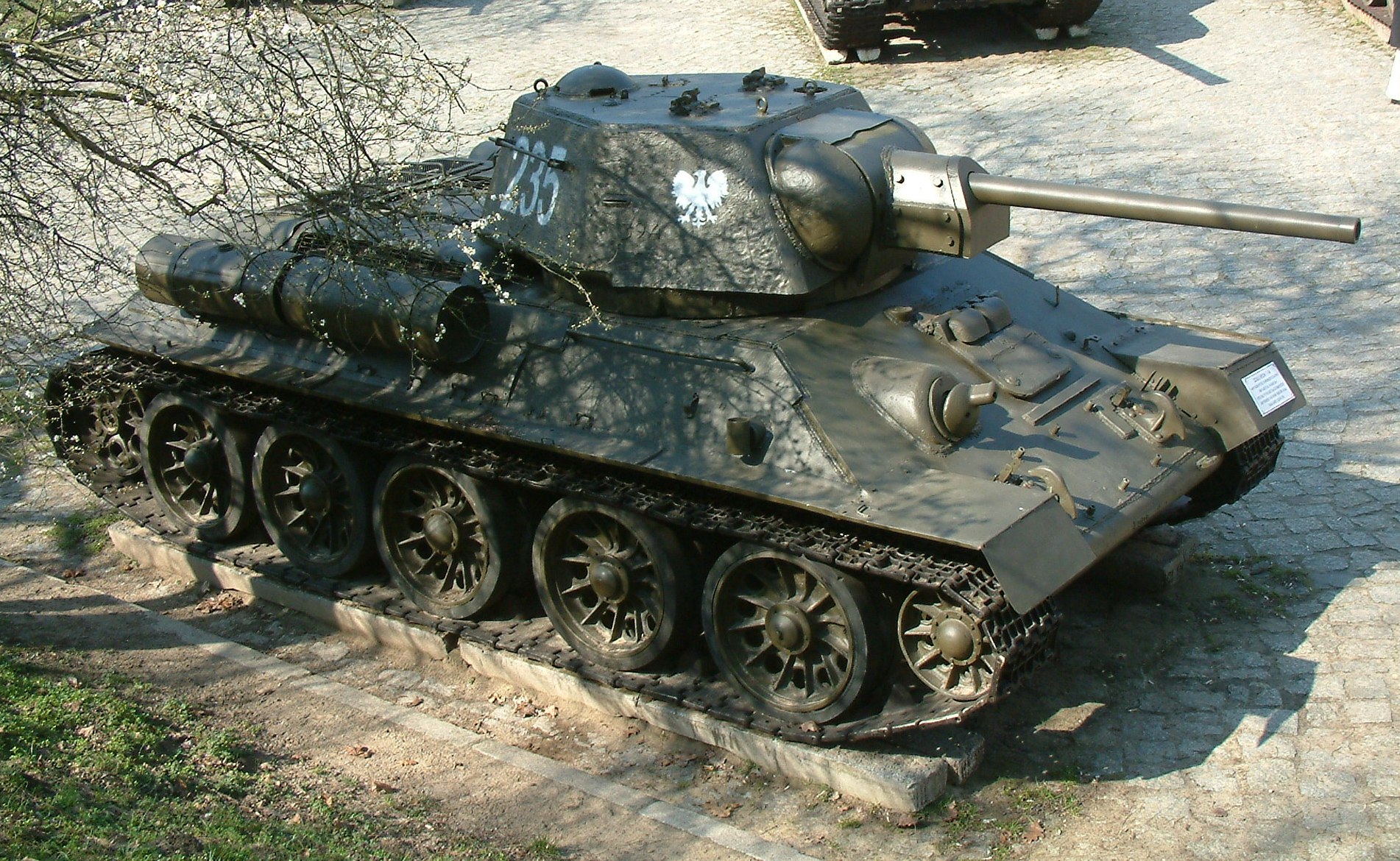
The Soviet Union received a fair number first gen Shermans, all M4A2 models and liked them. They considered it a fine substitute for the T-34, and the crews felt it was more comfortable than their T-34. I would give the M4 the overall edge in tank quality looking at the first gen tanks.

T-34-85: The Improved T-34 That Would See Use For Decades
This later version of the T-34 had an enlarged three-man turret with an 85mm gun. This model of the T-34 was a better tank than the 75mm first gen Shermans, but about equal the later models with the 76mm gun. The M4A3 76 HVSS tanks would prove to be more than a match for the T-34-85s they met in Korea, and would really come down to crew quality.
. . .
The T-34 chassis would be used in many varied armored vehicles, a lot like the Sherman, but not as extensively. The Christie suspension would be a limiting factor. The internal springs of the design would take up to much space for the advantages they offered and torsion bar, or bolt on suspension like used on the centurion would outlive the Christie suspension.
The T-34 tank and the many vehicles that sprang from its basic chassis is a fascinating subject, far too complicated to cover in a few paragraphs on another tanks web page. It really deserves its own page like this dedicated to its design. I don’t know enough about the T-34 to do it, but I hope someone gives it a try.
Sources: Armored Thunderbolt by Zaloga, Yeide’s TD and two separate tank battalion books, Sherman by Hunnicutt, Combat Lessons, The Rank and file, what they do and how they are doing it 1-7, and 9. Archive Awareness, Oscar Gilbert’s, Marine Tank Battles in the Pacific, WWII Armor, Ballistics and Gunnery by Bird and Livingston, Tigers in the Mud, by Carius, D.W. to Tiger I, and Tiger I & II combat tactics by Jentz, Panther Tank by Jentz, Panther and its Variants by Speilberger, Panzer III and its Variants and Panzer IV and its variants by Speilberger, The Sherman Minutia Site, Son of a Sherman by Stansell and Laughlin, M4 Sherman tank at war by Green, Tanks are a Might Fine Thing by Stout, the Lone Sentry, TM9-731B M4A2, TM9-731G M10A1, TM9-745 GMC M36B2, TM9-748 GMC M36B1, TM9-750M3, TM9-752 M4A3, TM9-754 M4A4, TM9-759 M4A3, Land mines, TME9-369A German 88MM AA Gun, TME30-451 Handbook on German Armed Forces 1945, TM9-374 90mm Gun M3, FM5-20 Camouflage, FM5-20B Camouflage of Vehicles, DOA Army Battle Casualties and Non Battle Deaths in WWII, FKSM 17-3-2 Armor in Battle, FM17-12 Tank Gunnery, FM17-15 Combat Practice firing, FM17-30 The Tank Platoon 42, FM17-32 The Tank Company medium and light, FM17-33 The Armored Battalion, FM17-67 Crew Drill and Service of the Piece M4 Series, Another River, another town by Irwin, Tanks on the Beaches by Estes and Neiman, Cutthroats by Dick, The Myth of the Eastern Front by Smelser and Davies, Tank Tactics by Jarymowycz, Panzer Aces by Kurowski, Commanding the Red Army’s Shermans by Loza, The Radionerds website, The French Panther user report, Wargaming’s Operation Think Tank Videos, all the info in the data and links sections. Historical Study, German Tank Maintenance in WWII

